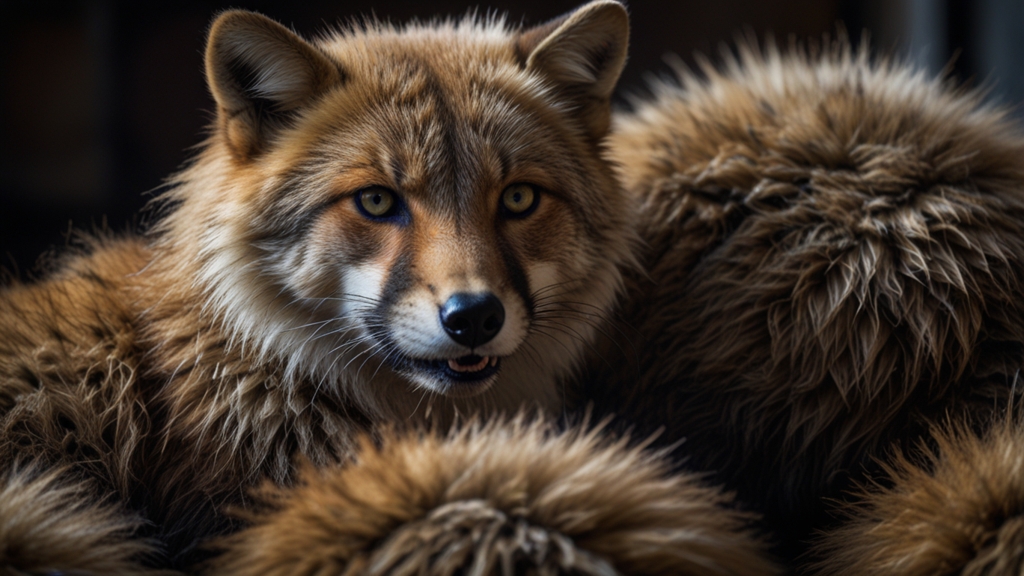Fighting for Fur: How Social Media is Revolutionizing Animal Advocacy
In an era of unprecedented connectivity, social media has become a powerful tool for voicing causes, sparking movements, and effecting change. Among its most impactful applications is the revolutionization of animal advocacy. The fight against fur, once the province of small, impassioned groups holding placards, has found a vast and vibrant audience online. Through platforms like Instagram, Twitter, and Facebook, activists are now able to reach millions, driving an urgent message against animal cruelty and pushing for systemic change.
The Power of Visual Storytelling
One of the most potent aspects of social media is its ability to tell stories through visuals. Compelling images and videos can evoke a visceral reaction, which is crucial in animal advocacy. Footage showing the grim realities of fur farms, for example, can be heart-wrenching but also mobilizing.
“A single image or video has the power to ignite millions of hearts and minds in ways that words alone often cannot,” says Jane Goodall, renowned primatologist and animal advocate.
Social media platforms, particularly Instagram and TikTok, provide the ideal conduit for such emotive content. By sharing behind-the-scenes looks at rescues, rehabilitations, and the stark contrast of animals in brutal captivity versus those in loving environments, advocates can create a compelling narrative that draws followers and prompts action.
Building Global Communities
The traditional boundaries that once confined animal advocacy groups to local areas have been dismantled by the global nature of social media. Activist organizations can now rally international support, coordinate activities across borders, and create a unified front against practices like the fur trade.
The #FurFree hashtag, for instance, has transcended geographical limitations, enabling activists from all over the world to share information, resources, and encouragement. This global solidarity not only amplifies the message but also demonstrates a widespread consensus against the exploitation of animals for fur.
Viral Campaigns and Hashtag Activism
One of the defining features of social media activism is the ability to create viral campaigns. Hashtags such as #StopFurTrade, #FurIsDead, and #FurFreeFashion have become rallying cries that organize and galvanize efforts. These digital campaigns can reach countless individuals within a short period, exponentially increasing their impact.
The viral campaign #FurFreeFriday, which encourages people to abstain from purchasing or wearing fur products every Friday, exemplifies this phenomenon. Each post, like, and share helps to build a movement that transcends the digital realm, affecting real-world consumer behavior and pressuring companies to commit to fur-free policies.
Influencer Advocacy
Another pivotal force in the social media landscape is the role of influencers. With their extensive reach and devoted followings, influencers can significantly impact public opinion. Many celebrities and public figures have leveraged their platforms to advocate for animal rights, using their influence to champion fur-free fashion and condemn animal cruelty.
“Using my platform to speak out against animal suffering is one of the most meaningful ways I can make a difference,” says actor and activist Peter Dinklage.
The involvement of high-profile individuals not only draws more attention to the cause but also normalizes the discourse surrounding animal welfare. When influencers endorse fur-free lifestyles and advocate for change, they inspire their followers to reconsider their own choices and take action.
Real-Time Advocacy and Engagement
Social media offers a dynamic avenue for real-time engagement. Activists can live-stream protests, provide up-to-the-minute updates on campaigns, and directly interact with supporters. This real-time communication fosters a sense of immediacy and urgency that is crucial for mobilizing action quickly.
Furthermore, the interactive nature of social media allows for meaningful dialogue. Advocates can engage with followers, answer questions, and counter misinformation. This two-way communication helps to build a more informed and committed community.
Challenges and Considerations
While social media has undoubtedly revolutionized animal advocacy, it is not without challenges. The fast-paced nature of these platforms can sometimes lead to misinformation or oversimplification of complex issues. Moreover, the sheer volume of content can make it difficult for individual campaigns to stand out.
Nonetheless, the advantages far outweigh the drawbacks. The ability to reach a broad audience, foster global solidarity, and drive viral campaigns has transformed the landscape of animal advocacy. As social media continues to evolve, so too will its capacity to catalyze change.
Conclusion
The fight for fur-free fashion and the broader battle against animal cruelty have found a formidable ally in social media. Through powerful visuals, global communities, viral campaigns, influencer advocacy, and real-time engagement, activists are rewriting the playbook for animal advocacy. As more people around the world connect and mobilize online, the movement grows stronger, pushing us ever closer to a world where fur belongs only on animals, not in our closets.








